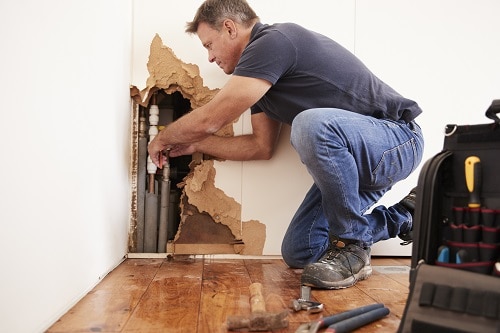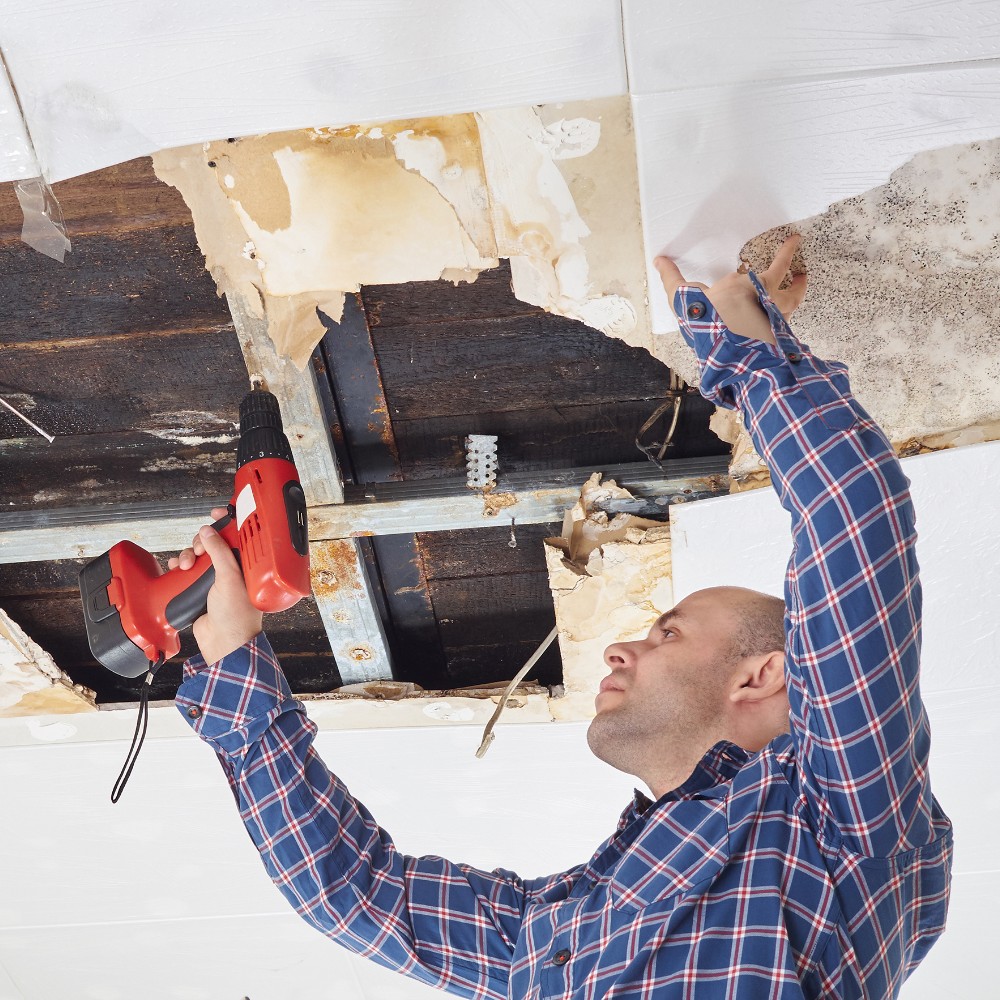Water Damage Restoration 101: Understanding the Process and Cost
Water damage can strike all of a sudden, leaving house owners in a state of confusion. Understanding the reconstruction process is crucial for reliable recuperation. From reviewing the damage to choosing the appropriate company, each step influences the overall end result and price. Elements such as the kind of water damage and seriousness also play a significant function. What are the specific techniques made use of in remediation, and just how can one prepare for possible expenditures?
Kinds Of Water Damage

Preliminary Analysis and Examination

Water Removal Methods
Adhering to the first assessment, efficient water removal techniques are utilized to alleviate damage and prevent further concerns. These strategies involve the usage of specific tools such as industrial-grade vacuums and submersible pumps - Water Damage Restoration. The selection of technique depends on the volume of water existing and the kind of materials influenced. For standing water, submersible pumps are generally utilized for rapid removal, while vacuums are perfect for extracting water from carpetings and furniture. In addition, progressed approaches like water extraction floor coverings may be used for hard-to-reach locations - Water Damage Restoration. The objective is to eliminate as much water as feasible, decreasing the capacity for mold growth and architectural damage. Trigger and effective water removal is vital in the total water damage repair procedure
Drying and Dehumidification Process
As soon as the water extraction is complete, the drying out and dehumidification procedure becomes critical to recovering the damaged location. This stage usually uses industrial-grade dehumidifiers and air movers to successfully minimize moisture degrees. The dehumidifiers reel in wet air, getting rid of excess moisture, while air movers distribute air to accelerate evaporation. Surveillance devices is often made use of to track humidity and temperature levels, ensuring excellent drying out conditions. The period of this process can vary depending on the level of the water damage and ecological aspects. It is necessary to thoroughly dry all impacted materials, including wall surfaces, flooring, and home furnishings, to stop mold and mildew development and architectural damage. Appropriate execution of this action is crucial for an effective remediation end result.
Cleaning Up and Sanitizing Afflicted Areas
When the drying out procedure is complete, a comprehensive initial evaluation and examination of influenced locations is vital to determine contamination levels. Effective cleansing strategies and appropriate items must then be used to remove particles and discolorations. Sanitization and sanitation approaches are necessary to guarantee that dangerous pathogens are gotten rid of, restoring the area to a safe condition.
Initial Evaluation and Examination
Prior to beginning any type of reconstruction initiatives, a complete first evaluation and evaluation of the affected areas are essential for reliable cleansing and sanitizing. This process entails identifying the extent of water damage, figuring out the source of the water breach, and reviewing the products influenced. Assessors normally seek signs of mold growth, structural honesty problems, and damaged possessions. The evaluation additionally consists of inspecting wetness degrees utilizing specialized equipment to guarantee no concealed water pockets stay, as these can cause additional issues. Documenting the findings is essential for planning the following steps in the reconstruction procedure. An in-depth initial analysis enables reconstruction specialists to create a targeted technique for reliable cleaning and disinfecting, inevitably decreasing damage and health and wellness risks.
Cleansing Techniques and Products
Reliable cleansing and disinfecting of water-damaged areas require a range of products and methods customized to the details products impacted. For porous surface areas like drywall and carpeting, extraction approaches are important to eliminate excess moisture, adhered to by deep cleaning with specialized detergents. Non-porous products such as ceramic tile or steel can be cleaned up using commercial-grade cleansers that efficiently get rid of contaminants. Vapor cleansing is another reliable method, particularly for carpetings and furniture, as it uses heats to get rid of microorganisms and mold and mildew (Flood Cleanup Services). Additionally, environmentally friendly products are increasingly popular for their security and effectiveness - Water Extraction And Drying. Ultimately, selecting the proper cleaning approaches and items not only assures prompt tidiness yet also aids in avoiding additional damage and carcinogen linked with water invasion
Sanitization and Disinfection Techniques
When resolving water damage, appropriate sanitization and disinfection methods are crucial to assure the safety and wellness of the damaged atmosphere. After first cleaning, surface areas need to be treated best site with appropriate anti-bacterials to get rid of virus, mold, and microorganisms that prosper in moist conditions. Typical methods consist of using EPA-approved chemical anti-bacterials, which can be applied via spraying or wiping methods. Additionally, ultraviolet (UV) light systems can effectively sterilize locations by counteracting bacteria without harsh chemicals. The option of approach typically depends on the type of products impacted and the level of contamination. Eventually, thorough sanitization not just recovers a secure living area yet additionally aids stop future wellness risks connected with sticking around moisture and mold development.

Repairs and Restoration Options
Examining the damage caused by water exposure is essential for identifying the proper fixings and remediation choices. Homeowners may deal with numerous concerns, consisting of harmed drywall, warped floor covering, and endangered architectural components. Depending on the extent of the damage, repair work may entail replacing areas of drywall, setting up brand-new floor covering, or enhancing architectural light beams. In instances of serious damage, complete substitute of damaged materials could be necessary. In addition, specialist conservators frequently advise utilizing moisture meters to evaluate covert wetness levels before picking the most effective strategy. It is necessary to act without delay to prevent mold development and additional degeneration. Selecting the appropriate alternatives not only brings back the residential property but likewise ensures lasting security and capability.
Factors Affecting Restoration Costs

The extent of water damage straight affects the restoration sets you back property owners can anticipate to sustain. Variables such as the source of the water, the period of direct exposure, and the damaged materials considerably affect prices. As an example, clean water damage from a damaged pipe is normally much less costly to bring back compared to damage brought on by sewer. Additionally, the level of contamination determines the requirement for specialized cleaning and disposal solutions, better increasing expenses. Geographic location also plays a duty, as regional labor prices and schedule of remediation services can differ. Finally, the necessity of the feedback affects costs; quicker interventions normally bring about decrease overall costs by protecting against additional damage. Understanding these factors is essential for homeowners when approximating repair costs.
The three key kinds of water damage are classified based on contamination levels: clean water, grey water, and black water. A comprehensive initial assessment and inspection are vital actions in the water damage repair procedure. For standing water, submersible pumps are typically made use of for rapid elimination, while vacuum cleaners are ideal for removing water from carpets and upholstery. The degree of water damage straight influences the remediation costs house owners can expect to sustain. Tidy water damage from a damaged pipe is usually much less pricey to bring back contrasted to damage caused by sewage.